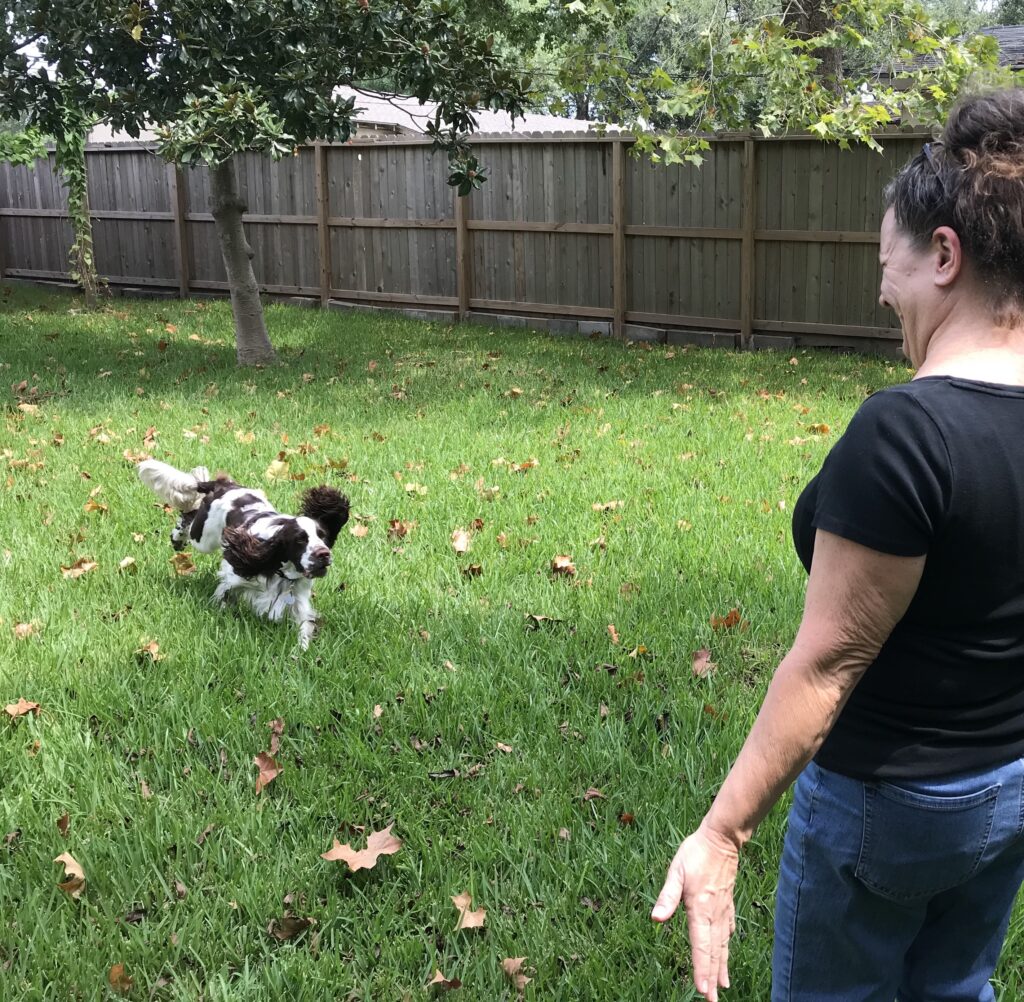
- Science and Animal Training Series #1: What is Science-Based Training?
- Science and Animal Training Series #2: Do I have to be a science geek to learn to train dogs?
- Science and Animal Training Series #3: Behavior Science Principles
- Science and Animal Training Series #4: Science-based Dog Training Matters
The big picture of dog training
There’s a big picture of dog training, and it involves how we treat animals and humans. Positive reinforcement can help us get others to respond in ways we like. It requires us to observe our own behavior and choose what we do so we can get the responses we want. This is how we train flighty animals like chickens, carnivores like dogs and cats, herbivorous herd animals like goats, sheep, horses, and cows. We behave differently about each species we train, based on their niche in the world. We can train rodents, parrots, reptiles, fish, octopus, and more. It’s about knowing something about those animals and using that to predict what they are likely to do in a given situation. Then we can set up the situation that works for the behavior we want to train, use our own behavior to facilitate the training process, and select the correct bits of behavior to reinforce and build into our final goal.
Positive reinforcement dog training was not modeled for everyone
You may not have seen this way of learning modeled much in your life, or maybe you were one of the lucky ones who did. Many of us grew up with the model of being spanked when we did something bad and the idea of “showing animals who is boss.” When I first began to learn dog training skills, I was taught to look for the dog to do the wrong thing, then use one of the many available techniques to hurt the dog until he began to do the behavior correctly. All this worked, and I saw success with my dog training.
Something was missing in my dog training
However, I saw some gaps in my dog training. I began to learn in 1990 that I could use a little more of my brain power, learn to observe when the dog did something that was a small part of the final behavior I wanted, reinforce that, and build my goal behavior much more rapidly than hurting the dog. I could do this without any of the problems I was seeing in my obedience competition dogs I was using punishment to train. Problems included slow speeds in the ring, dogs who would rather be farther away from me than close, and dogs who appeared to want to go home rather then to a competition. These were very subtle issues. Many people might not have even noticed them, and I was conquering them and doing well in competition, but I wanted more.

I found out what I needed to learn
I found what I wanted after attending a seminar with Dr. Ian Dunbar and then diving into study with Dr. Bob Bailey for nearly 20 years. Dr. Dunbar showed me that looking for the positive would help me find it. Observation skills can be learned. Dr. Bailey taught me the specifics of shaping behavior, meticulous observation skills, and how to develop great timing. These skills can also be learned.
Learning takes effort but it’s worth it!
You have to want to learn them, and it’s a challenge to change what your brain has learned to focus on, just as it’s a challenge to change any habit that is no longer serving your needs. But now, I can train animals to do things I couldn’t even dream of before. Simon, my goat learned to voluntarily lift his foot to have a hoof trimmed. The sheep learned to stand quietly for shearing. I developed the ability to teach my dogs tricks and obedience behaviors so fast and with such precision, it made my head spin. The family cats learn tricks and husbandry behaviors just as well as my dogs. My students really reaped the benefits. I learned to use positive reinforcement to help my students and to carefully shape their behavior, just like my mentor, Dr. Bailey, taught me. Allowing students to explore helps them discover individual pieces of behavior they can change to get what they want.
Observing people and animals, looking for what they’re doing right, and reinforcing selected behaviors that lead to the goal, is a way of being that gets results I like. It’s a way of having the relationship I want to have with my dog. That’s why science-based dog training matters. It may help you get what you want from your life with your dog.
This concludes our series on Science and Animal Training, though the topic pervades everything we do at The Mannerly Dog!

